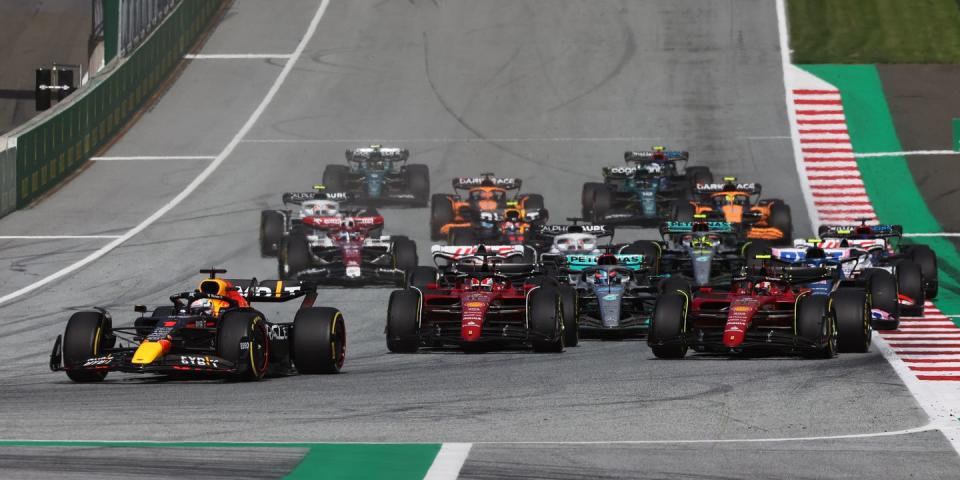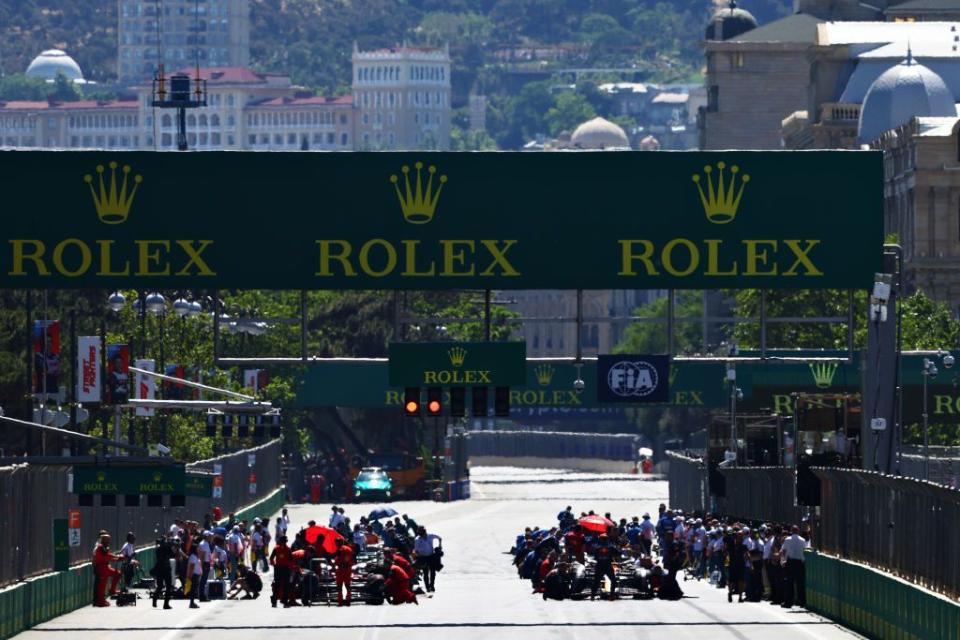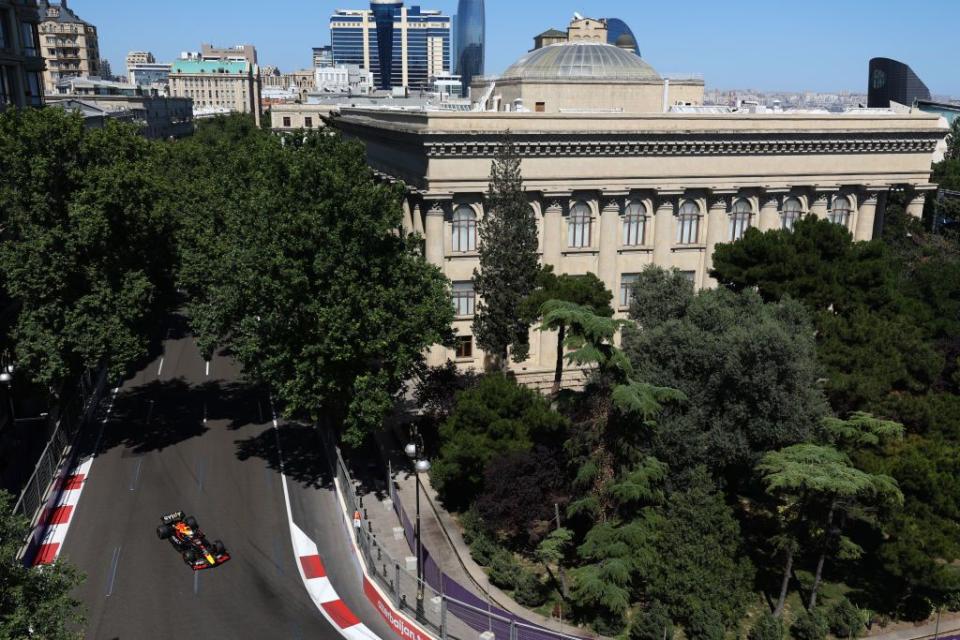More Changes Made to Sprint Saturdays: 'Shootout Twist' Will Spice Qualifying

Formula 1 is changing its format for Saturday's Sprint race during six F1 weekends in 2023.
Free practice (60 minutes), regular qualifying session, sets the grid for Sunday’s Grand Prix.
Saturday's Sprint Shootout, sets the grid for Sprint, followed by Sprint race.
Saturday's Sprint race rewards the top-8 finishers with championship points (8-7-6-5-4-3-2-1).
Formula 1’s Sprint format will be revised to split the mini-race away from the remainder of the Grand Prix event, starting from this weekend’s round in Azerbaijan.
For the six Sprint rounds this year there will be a separate qualifying session to determine the starting grid, while the outcome of Sprint will no longer form the race’s lineup.
The proposal was unanimously supported by the Formula 1 Commission on Tuesday, and then ratified by the FIA’s World Motor Sport Council, ahead of this weekend’s fourth Grand Prix of 23—and first of six Sprint events—at Azerbaijan’s Baku City Circuit.

What is Sprint?
Formula 1 introduced Sprint in 2021 in one of the biggest revisions to a Grand Prix weekend in its plus-70-year history.
Under the format, which was trialled at three Grands Prix, the usual qualifying session was shifted to Friday, setting the grid for a roughly 30-minute, 100 km race (about a third distance of a Grand Prix) on Saturday afternoon, the result of which set the grid for Sunday’s Grand Prix.
That format was retained for 2022, where Sprint was again run on three occasions, albeit with a greater range of points on offer for the top eight finishers.
The expansion for 2023
For 2023, Sprint was eventually expanded to feature at six Grands Prix: Azerbaijan, Austria, Belgium, Qatar, Austin and São Paulo.
The format was expected to remain unchanged but it emerged last month that Formula 1 was striving to implement alterations to enhance Saturday’s spectacle.
There were a couple of reasons behind the push.
At Sprint events, Saturday’s second one-hour practice session was largely redundant due to the cars being in ‘parc ferme’ conditions post-qualifying, thus eliminating the ability to carry out much in the way of set-up work. Drivers also had no reason to push for fast laps due to the entire focus being on race performance.
In addition some drivers were reluctant to adopt too risky an approach for the Sprint race due to the results setting the grid for Sunday’s Grand Prix.

What Has Now Changed?
Saturday’s second practice session has been scrapped and replaced by a qualifying session for Sprint. This will be known as Sprint Shootout.
Friday’s usual qualifying session will no longer set the grid for Sprint but will now set the grid for Sunday’s Grand Prix—and Sprint will now be separated from Sunday’s main race.
Saturday’s qualifying session will adopt the usual Q1/Q2/Q3 knockout format but with reduced session time in order to add greater jeopardy in each of the sessions.
In Sprint Shootout, Q1 will last 12 minutes (down from the regular 18), Q2 will be 10 minutes (down from 15) and Q3 will be eight minutes (down from 12).
In a further twist drivers will be mandated to use the medium tire compound in both Q1 and Q2, before switching to the soft tire compound for Q3.
In summary:
Friday: Free practice (60 minutes), regular qualifying session, sets the grid for Sunday’s Grand Prix
Saturday: Sprint Shootout, sets the grid for Sprint, followed by Sprint race
Saturday's Sprint race rewards the top-8 finishers with championship points (8-7-6-5-4-3-2-1),
Sunday: Grand Prix
How Might It Change the Weekend?
Sprint weekends were already more intense for teams and drivers but that will now step up a notch, with only a solitary one-hour practice session (on Friday morning) prior to two qualifying sessions, Sprint and the race itself.
Any misstep during that practice session will be keenly felt heading into the respective qualifying sessions. And, with drivers having to push more, it risks incurring more damage to components, particularly at a street circuit such as Baku. Teams are also mindful of the short turnaround time to the next race, in Miami, just one week later.
Sprint Shootout will also have little room for errors; in the usual Q3, there is sufficient time for two runs but Formula 1’s hope is that the reduced session time will leave space for only one push lap to determine the top 10 on the grid for Sprint.
There was nothing fundamentally wrong with the old Sprint format. After all, in 2021 it took place at Silverstone, Monza and São Paulo, setting the stage for three Grands Prix remembered for controversial clashes, superb racing and surprise results.
Last year’s Sprints were less memorable though that owed much to the season domination by Max Verstappen, more straightforward circumstances, and the novelty of Sprint itself having worn off. A format, after all, is only as strong as its product.
What Else Has Changed?
Other non-Sprint aspects to Formula 1 were also approved during Tuesday’s meeting in Geneva, Switzerland.
• The number of power unit elements drivers will be permitted, before incurring a grid penalty, has been increased. For 2023 only the number of Internal Combustion Engine, Turbo Charger, MGU-H and MGU-K elements each driver is allowed has been increased from three to four.
• The pre-race grid procedure build-up has been expanded from 40 to 50 minutes to allow additional time for driver presentations at select Grands Prix.
• There was also a minor revision to the financial regulations moving forward. There will be additional exclusions of costs in respect of certain sustainability initiatives, such as costs associated with installing sustainable infrastructure and the auditing of teams’ carbon footprint. Formula 1 introduced financial regulations in a bid to level the playing field in 2021.

 Yahoo Autos
Yahoo Autos 